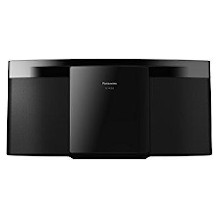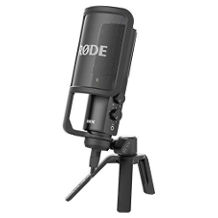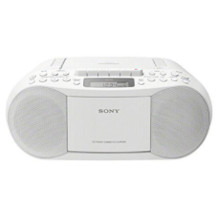Record player purchasing advice: how to choose the right product
- What You Need to Know
- Specialist shops offer a large range of record players.
- Good entry-level models can cost about £80.
- Fully automatic record players are known for being particularly easy to use.
- Having built-in speakers does not always offer value for money.
Record Players Are Back in Fashion
Despite the impact of MP3s and streaming services, record players have experienced a real revival in the last few years. As more and more people become convinced of the unique charms of vinyl records, demand for record players has gone through the roof. That said, not everyone is equally convinced. For a lot of potential customers, questions still remain as to the advantages of record players and what to look out for when buying one.
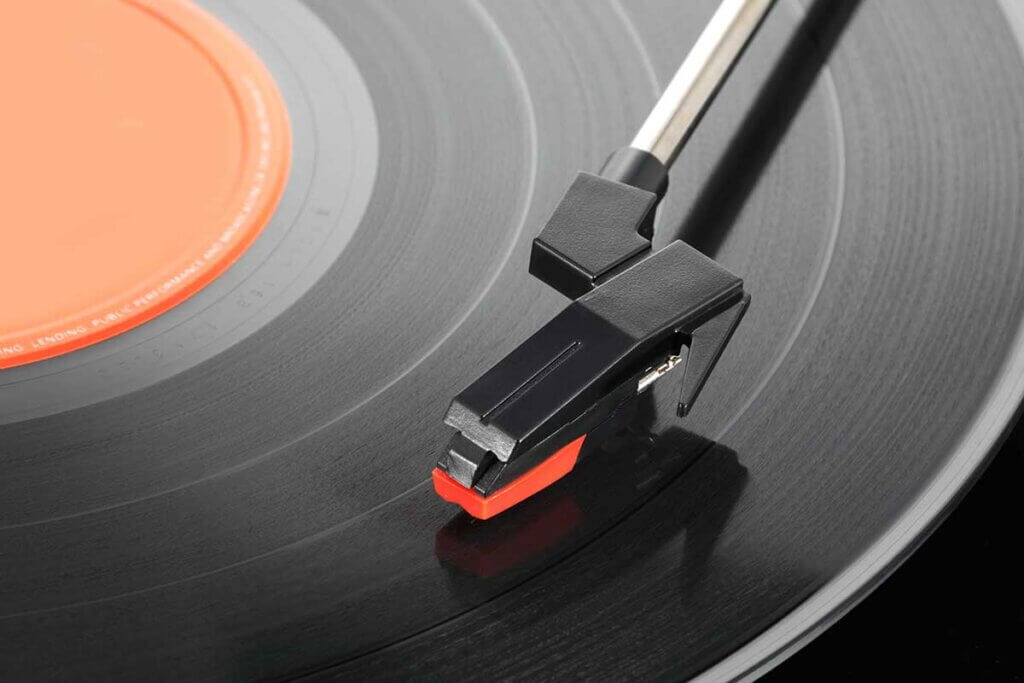
What’s So Special About Record Players?
For a lot of music lovers, only owning an MP3 or digital copy of their favourite music is simply not enough. Instead, they crave having something that they can hold in their hands. It’s unsurprising, therefore, that the sales of record players have been going up for years. Record labels are acutely aware of this trend and are increasingly releasing music in both digital and physical form. Buying a record player allows you to listen to flea market gems, as well as releases from your favourite contemporary artists.
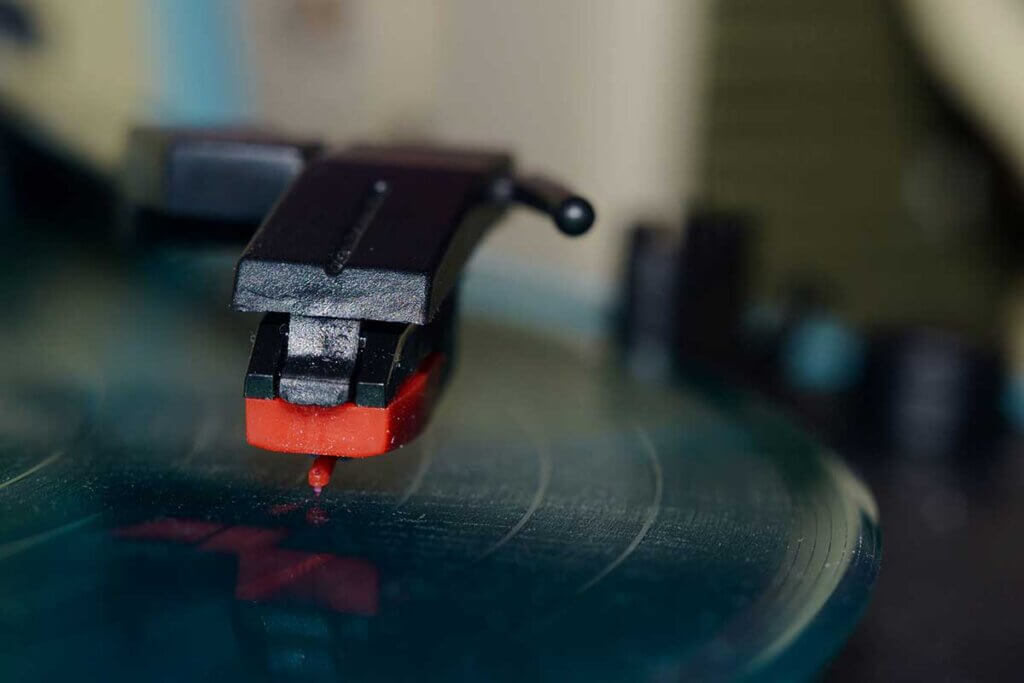
Vinyl lovers firmly insist on the purity of the sound offered by their record players. Holding a record in your hands, meanwhile, is a feeling that simply can’t be replicated by owning a digital copy. While record collecting is a hobby for a lot of vinyl enthusiasts, for others, it can even overtake their love of listening to music.
How Does a Record Player Work?
The basic principles of a record player are easily explained. A player has a needle, which runs over the sensitive grooves of a record. This creates vibrations, which the player firstly turns into an electrical current, before it is equalised, amplified, and converted into audible tones. The needle can either be made of metal, diamond, or sapphire. In all three cases, the needle is mounted on a tone arm. This tone arm is then balanced out by a counterbalance or using adjustable springs.
The speeds at which a record spins varies depending on the record. Modern machines play vinyl at either a speed of 33 or 45 spins per minute. Some models are still capable of playing older shellac records, which require a higher speed.
Different Types of Record Player
Such is the size of the selection of record players on the market that making a decision is never easy. Users essentially have the choice between entry-level models and high-end devices. Higher-end products are usually required by DJs who need a different level of technical control than your average music fan who just wants to listen to some good tunes.
Tips for Buying a Good, Entry-Level Model
Vinyl newbies are best off opting for a fully automatic record player. At the press of a button, the needle moves into place and music begins to play. It’s also not a bad idea to keep a USB stick. USB sticks allow you to digitalise the records you find at the flea market and listen to them on your smartphone.
However, a USB connection alone is not enough to digitalise your tracks. To do this, you need a specialist piece of software which isn’t always included in the price at purchase. A price comparison is definitely advisable here.
High-End Models and Equipment for DJs
DJs (and aspiring DJs) need a record player with a pitch adjust slider. It’s also important that the needle is lit up, allowing you to see the tone arm, even in the dark of a club. Record players for DJs also need a direct drive, which allows a DJ to ‘scratch’.
What to Look Out for When Buying a Record Player?
Those looking to buy a record player are truly spoilt for choice. Even though the technology is no longer the most up to date, the variety on the market is seemingly enormous.
Belt Drive or Direct Drive?
Record players either have a belt, or a direct drive. Models with a belt drive are driven by a small drive roller underneath the edge of the platter and are considered suitable for home use. They are ready to use within seconds, although they are more prone to damage than other systems.
| Type of Drive | Advantages | Disadvantages |
| Belt Drive | CheapIdeal for home use | Prone to damage |
| Direct Drive | More functionsAlso suitable for DJs | More expensive |
DJs and users that want a record player for scratching need a model with direct drive. With these models, the speed of the motor axis is identical to that of the platter. If the platter is sped up or slowed down, then the same occurs in the motor. Manufacturing record players with direct drive is more difficult. Because of this, these models are more expensive. The drive also has little to do with the sound of the record.
The Friction Drive
There is in fact a third type of motor, but, due to its low sound quality, it has barely been used since the 1980s. Its name – the friction drive. With these models, height adjustable friction wheels set the platter into motion from underneath. This creates vibrations which can have a negative effect on the pick-ups, significantly reducing the sound quality.
Manual, Semi-Automatic, or Fully-Automatic?
Both records players with belt drive and direct drive can be bought in three different versions: manual, semi-automatic, or fully-automatic.
Manual record players usually don’t have as many buttons and sliders as semi-, or fully-automatic models. Using them is considered more difficult, as the needle has to be placed onto the record by hand. Some models are equipped with a lever which makes it easier to place the needle at the desired position. Manual record players cannot recognise the beginning or the end of a record.
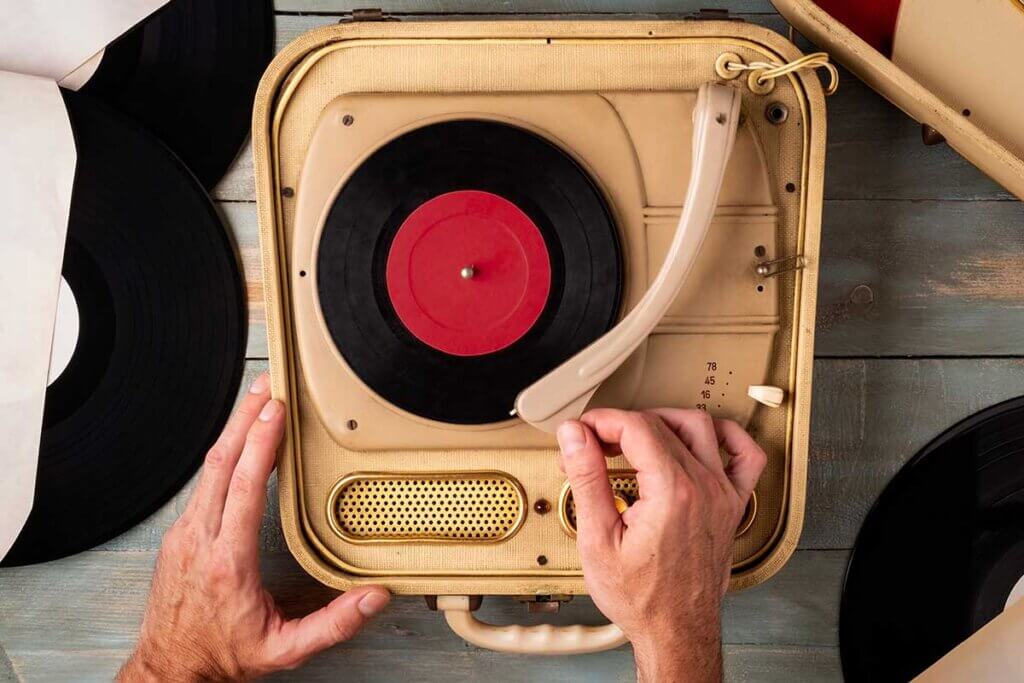
If a manual record player is not manually switched off, it will keep playing ad infinitum. Another disadvantage of a manual player is that the needle drops sharply onto the record. This can cause the needle itself to break, as well as potential scratches to the record.
With semi-automatic record players, the tone arm moves into place at the press of a button. To begin playback, the user has to position the needle onto the record themselves. When the record is finished, the arm resets to its original position automatically. Here, the risk of damaging the needle or record is significantly less. Semi-automatic record players have more components than manual versions. This increases the vibration rate and can diminish the sound quality.
Fully-automatic record players are known for being particularly easy to use. At the press of a button, the needle moves into the correct position, before moving back to its original position at the end of the record. When the record is over, it shuts down automatically. There is very little risk that the needle or record can get damaged during use, while unnecessary wear and tear is also easily avoided. It should however be noted that these models are more susceptible to malfunction. And, as with the semi-automatic model, there is a higher vibration rate.
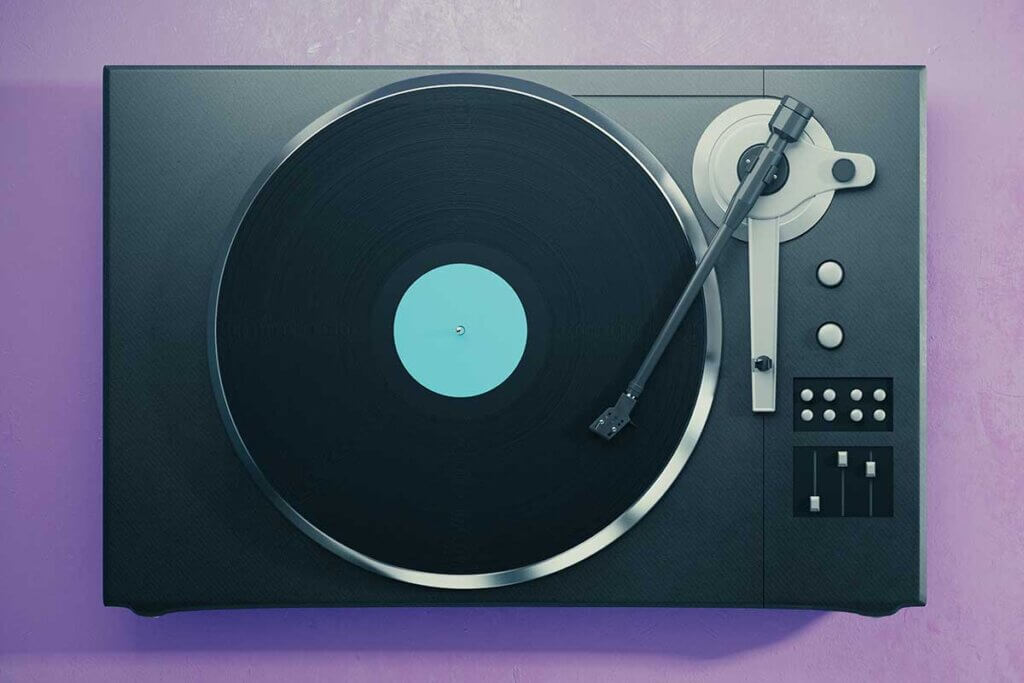
Speed
Records are most commonly sold as LPs, which have a 12–inch diameter and spin at a speed of 33 rotations a minute. Smaller ‘singles’ spin faster than this, at 45 rotations a minute. Normal record players come with a switch or a lever which allows for the speed to be adjusted. People looking to play old shellac records require a record player which spins at 78 rotations a minute. These models have become very rare and can usually only be found at flea markets.
Functionality
The functionality of a record player really depends on what you want to use it for. Terms like ‘pitch control’ or ‘needle lighting’sound fancy, but, in reality, they just aren’t useful for your average music fan. Anti–skate, meanwhile, is a function which is useful for all users. Anti-skate makes sure that the tone arm remains in place by hanging a counterbalance on it. Vibration absorbing feet are another important component which help to stop the needle skipping if disturbed.
Connection and Interface
Those who want to listen to their music a little louder without causing disturbance, need a record player with a headphone connection. A USB port is another important component if you want to digitalise your records. Meanwhile, preamplifiers can be connected with an aux-chord and external loudspeakers with a cinch cable.
What Is the Best Material for a Record Platter?
For cheap record players from the low-end of the market, the record platter is usually made from easily deformable plastic. These models have a short lifespan, and the sound quality is often far from ideal. Better record players have a record platter made from rubber or aluminium. Some models even come with a record platter made from felt.
Useful Accessories for a Record Player
When buying a record player, there are a few accessories which can help to improve your listening experience. Record brushes, stabilisers, and preamplifiers enable the subtle sound of an LP to be enjoyed in all its glory.
Record Brush
Records collect dust very easily. The grooves of a record are so fine that dust can be difficult to remove with a normal household cloth. It is therefore recommended to buy a record brush. Record brushes are made from a short bar, on which carbon or natural brush hairs are attached. Record brushes made from velvet are also available. The bar, meanwhile, is made from plastic or wood. The brush removes surface level dust and other impurities. If dust is trapped deeply in the grooves of the record, it can usually only be removed with a record cleaning machine, however buying one of these is usually only recommended for collectors.
Using a record brush is simple. Simply lay the record onto the record player and start the device without the tone arm. Instead, lay the brush on the inner grooves and move it slowly to the outside. When its finished, put the tone arm into place and see the results for yourself. Be careful, however! Depending on the material of the brush, static charge can build up on the record. This static charge can lead to even more dust collecting on the record, making it hard to even remove from its cover. Once cleaned, it is not advisable to put your records back in their original sleeves. Instead, it’s good practice to buy replacement inner sleeves to replace the old paper sleeves which have become dusty on the inside.
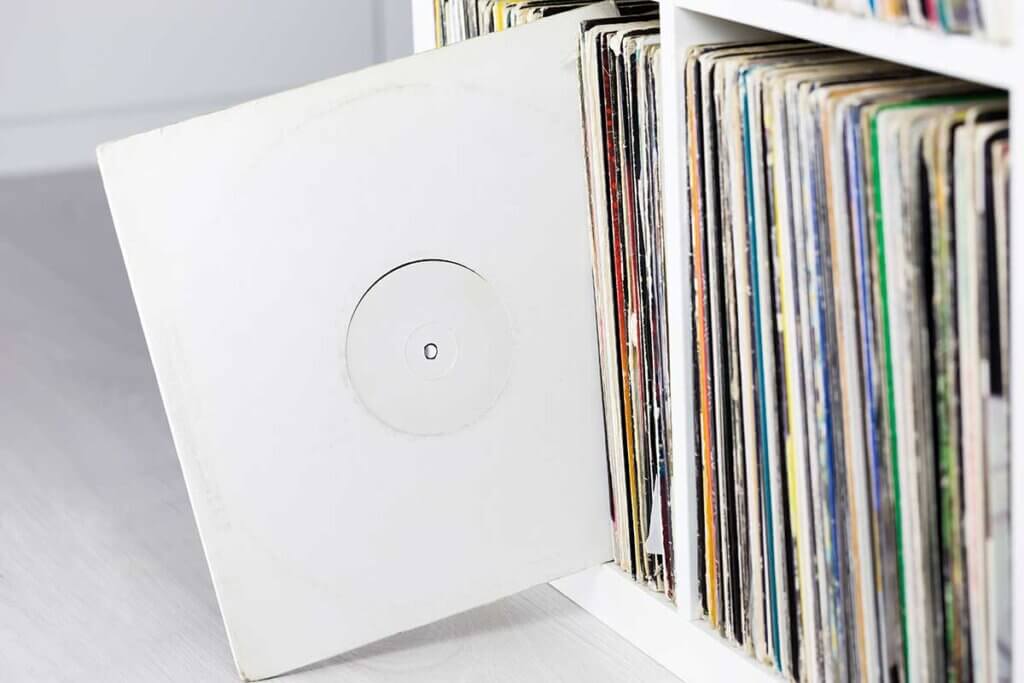
Record Weight
Old records found at the flea market are often a little deformed. This can cause the tone arm to jump or, in the worst cases, for the record to not even play at all. This can be caused by a number of factors—from incorrect storage, to improper transport, or exposure to direct sunlight. Record weights ensure that the records lie flatter. Their effectiveness depends, however, on the way in which the record is disformed.
If a record is bent at the edges, then a record weight will have no observable effect. Most weights weigh about 750 grams and are placed in the middle of the record, helping to create more stability. Lots of manufacturers call record weights ‘stabilisers’. Record players with lightweight record plates are more likely to spin unevenly. Record weights ensure that the record spins more evenly, creating a better overall sound quality.
Preamplifiers
Even with high-end record players, the signal is often too weak to create a loud sound. This is particularly frustrating if you are trying to play music a little louder, for example at a party. Most modern speakers don’t have the mono connection needed for connecting to a record player. This problem is simply solved by attaching a preamplifier (also known as ‘preamp’ or ‘phono-amplifier’). Put simply, the record player connects to the preamplifier which then connects to the aux input of the speaker system.
There are a range of preamplifiers available on the market, including models with programmable settings. DJs and true audiophiles may look for models where output levels and impedance can be adjusted. Preamplifiers with a USB connection can be purchased at specialist retailers.
Tips for Using & Maintaining Your Record Player
Record Players don’t really need too much attention. They spend most of their time quietly in the corner of the living room, only springing to life when occasionally called upon. As is the case with all analogue technology, there are a few things to pay attention to which can help to guarantee a longer product lifespan.
Regularly Cleaning the Needle
Whoever wants to keep their record player in the best condition for as long as possible should make sure to treat their record player with the upmost care. Most important is the cleaning of the needle. As soon as dust and dirt has become stuck to the needle, the sound quality begins to deteriorate. A small, soft brush is ideal for cleaning the needle, although there are of course other specialist tools which can be used to keep the needle in working order. This ensures that records can be read accurately and that the sound quality remains perfect. When not in use, the record player should be covered to prevent it from gathering dust.
How to Store Your Records
Even the best record players are rendered useless by using records which have been kept in a poor condition. Storage has a decisive influence on the lifespan and sound quality of a record. These are our top tips for storing records:
- Never put a record directly into the cover. Instead, always use an inner sleave. The inner surface of a cover is a raw surface which easily collects dust.
- Where possible, store records with the opening facing upwards so that the records cannot fall out by accident.
- Never store records too close together and certainly never squeeze them. A rule of thumb states that you should never keep more than 20 records together in a row!
- The best possible protection from damage or build-up of dust is provided by PVC protective coverings.
- Records can become disformed through exposure to heat. For this reason, never store them close to a radiator or in the attic.
- Damp basements are also not suitable for keeping records, as dampness can lead to a build-up of mould.
Frequently Asked Questions About Record Players
What else should I look out for when buying a record player? Hi-fi afficionados can talk for hours about sound quality, but, for most of us, all that information is simply not relevant. Below are a few of the most frequently asked questions by record player newbies.
How Do I Set Up My Record Player?
In an ideal world, a record player would be ready to use as soon as you bought it. Oftentimes, however, different settings need to be adjusted before it is ready for use. Using a record player which isn’t correctly set up can cause damage to the needle and therefore to the record itself, leading to a decrease in sound quality. It is most important to correctly set up the tone arm. To do this, follow the following instructions step-by-step.
- Put on a record but don’t turn on the record player.
- Move the tone arm slowly over the record to check if they run parallel to one another.
- If this isn’t the case, use the controller to readjust the tone arm.
After this step, the needle needs to be checked once again. Does the needle fall exactly into the groove? If so, then you’re on the right track. If, however, you experience distortion, then you need to carefully reposition the needle. If that doesn’t solve the problem, then the only solution is to change the needle.
Are Built-In Speakers a Good or a Bad Thing?
Lots of record players with built-in speakers are available on the market, however the sound quality of these models usually leaves something to be desired. Even with these models, it should be possible to connect further speakers. This is usually done with two cinch cables, one white and one red.

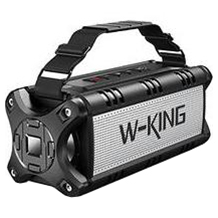
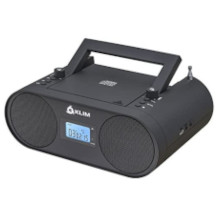
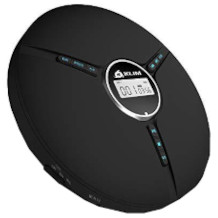
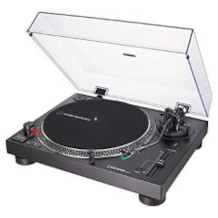

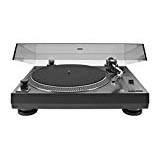
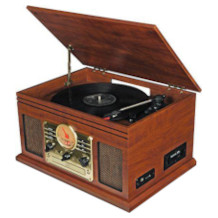
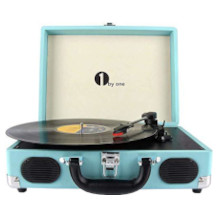
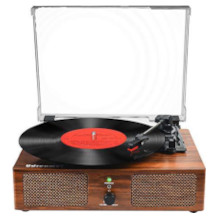
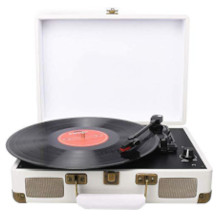
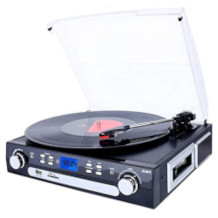
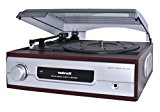
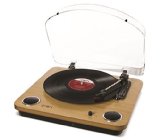

 1,689 reviews
1,689 reviews


